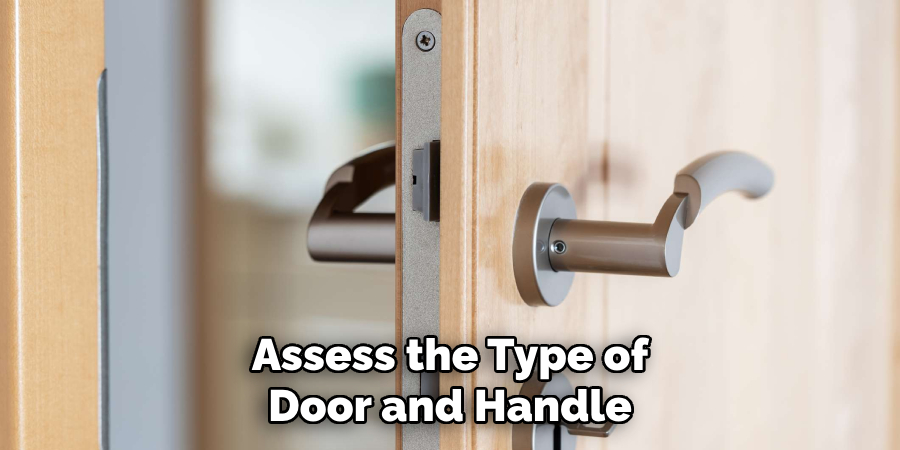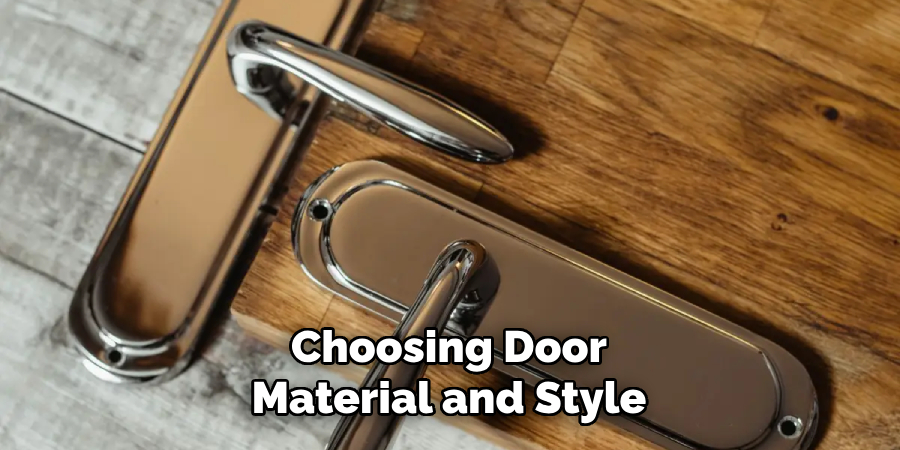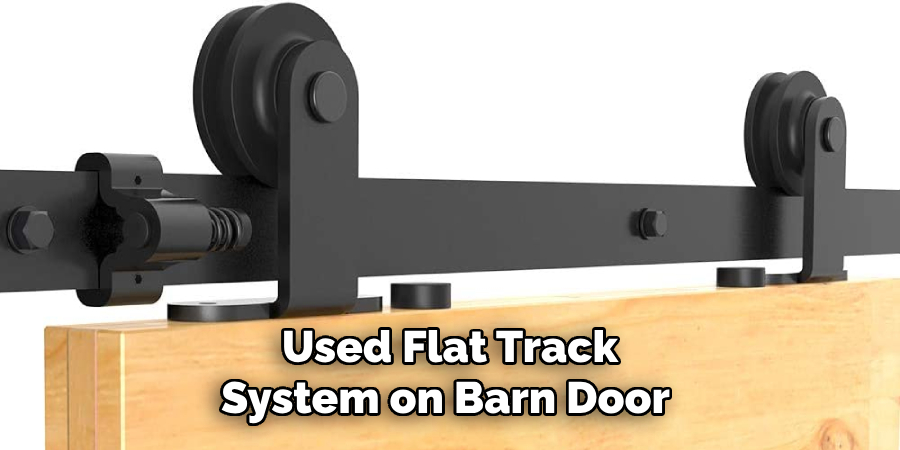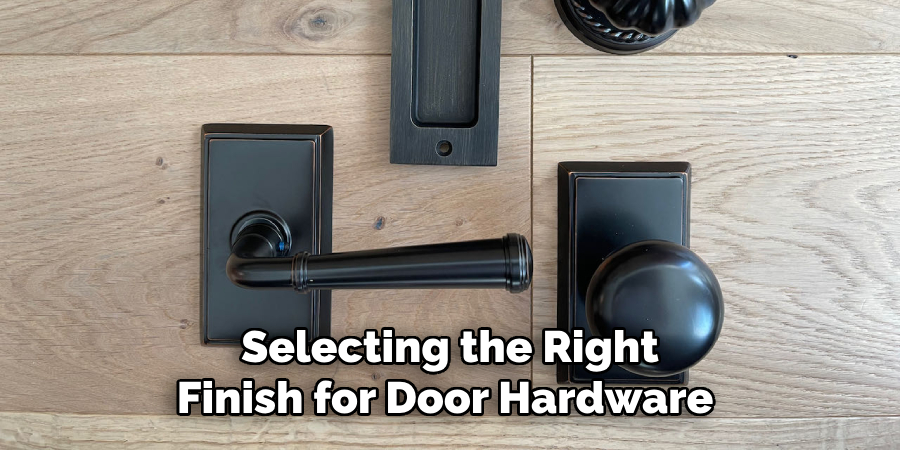In recent years, barn doors have surged in popularity within modern interior design due to their rustic charm and space-saving functionality.

These versatile doors are used in various settings, from cozy homes to trendy office spaces, providing a unique blend of traditional aesthetics and contemporary practicality.
Selecting the right hardware is crucial for ensuring that the barn door looks great and operates smoothly and efficiently. The process of how to choose barn door hardware involves several considerations, including the type of hardware system, the components needed, and the overall design.
By understanding your space requirements and the specific needs of your project, you can make informed decisions that enhance both the functionality and visual appeal of your barn door installation. This guide will walk you through the essential steps and factors to consider in this process.
Understanding Barn Door Hardware
Types of Barn Door Hardware
Barn door hardware comes in various types, each offering unique benefits and suited for different installation needs. The most common hardware types include flat track, box track, top mount, and bypass systems.
Flat track systems are popular due to their minimalist design and ease of installation. Box track systems feature enclosed tracks, offering a more concealed look and protecting the hardware from dust and debris.
Top mount systems attach directly to the top of the door, creating a clean, floating appearance. Bypass systems allow multiple doors to slide past each other, making them ideal for spaces where wall clearance is limited.
Understanding the differences between sliding, swinging, and bi-parting systems is crucial; sliding systems are space-efficient, swinging doors require more clearance and bi-parting systems split in the middle, providing a grand entrance.
Components of Barn Door Hardware
The key components of barn door hardware include the track, rollers, hangers, handles, and guides. The track is the rail along which the door slides; it must be sturdy and correctly installed to support the door’s weight.
Rollers attached to the door glide along the track, ensuring smooth movement. Hangers secure the door to the rollers and come in various designs to match your aesthetic preferences.
Handles are essential for operating the door and come in different styles to complement the door’s look. Guides are fixed to the floor or wall to keep the door aligned and prevent it from swinging out.

Each component plays a vital role in the overall system, contributing to the door’s functionality and ensuring a safe, smooth operation.
Assessing Your Needs and Space
Measuring Your Space
Accurate measurement is the cornerstone of a successful barn door installation. Start by measuring the width and height of the door opening. Use a tape measure to capture the dimensions precisely, recording the width at the top, middle, and bottom and the height on both sides.
This will help account for any irregularities in the doorway. Next, gauge the wall space where the door will slide open; ensure enough clearance to accommodate the door fully when open.
For instance, if you have a 36-inch wide door, you’ll need at least 36 inches of wall space, plus a few extra inches to avoid obstructions.
Additionally, consider baseboards, light switches, and other fixtures that could impede the door’s movement. By covering all these aspects, you can avoid common pitfalls during installation and ensure a smooth, unhindered operation of your barn door.
Determining Door Weight and Size
Determining the weight and size of your barn door is essential for selecting compatible hardware that will support and operate the door effectively. To begin, consider the material of your barn door—solid wood doors are heavier than hollow-core doors, for example.
Use a scale to weigh the door if that’s an option, or estimate based on the material’s average weight per square foot. Measure the door’s height, width, and thickness.
These dimensions will help you match the door with suitable tracks and rollers. Make sure to choose hardware with a weight capacity that exceeds the door’s actual weight to ensure durability and safety.
Typically, hardware packages will specify the maximum door weight they can handle. You ensure a long-lasting, functional door system that performs optimally by aligning your door’s dimensions and weight with the hardware specifications.
Considering Door Material and Style
Choosing hardware that harmonizes with the material and style of your barn door is crucial for achieving a cohesive design.

Whether your door is crafted from wood, glass, or metal, there are corresponding hardware options that can enhance its aesthetic appeal and functionality.
For wooden doors, rustic or wrought iron hardware provides a charming, vintage look, whereas brushed nickel or stainless-steel options are ideal for a contemporary feel.
If your door features glass panels, opt for sleek, modern hardware that complements the transparency and lightness of the material. For metal doors, industrial-style hardware can enhance the robust, utilitarian appearance.
Beyond material, the hardware style should resonate with your interior design theme. Whether your space skews rustic, modern, or industrial, selecting hardware that aligns with the overall décor ensures seamless integration, elevating both the functionality and the visual appeal of your barn door installation.
How to Choose Barn Door Hardware: Types of Barn Door Hardware and Their Features
Flat Track Systems
Flat track systems are one of the most commonly used types of barn door hardware due to their simplicity and ease of installation.
These systems consist of a flat metal bar that serves as the track and rollers that move along the bar, allowing the door to slide open and close. The design is typically minimalist and can be incorporated into various décor styles, from rustic to contemporary.
The flat track is usually mounted above the door opening and is visible, adding a decorative element to the door’s functionality.
Benefits: The primary benefits of flat track systems include their straightforward installation process and attractive, unobtrusive design. They can support substantial weight, making them suitable for heavy wooden doors. Additionally, their open structure allows for easy maintenance and adjustments.
Limitations: One limitation is the potential for dust and debris accumulating on the exposed track, which may require regular cleaning. While flat tracks are versatile in design, they may not offer the same level of concealment provided by other hardware systems.

Box Track Systems
Box track systems feature an enclosed track that conceals the rollers and other moving parts, offering a sleek and clean appearance. The track is typically rectangular or square-shaped, with the door hanging from rollers gliding within the enclosed space.
This system is designed to protect the hardware from dust and debris, which can enhance the longevity and performance of the components.
Benefits: The enclosed design of box track systems provides a more polished and concealed appearance, which can be advantageous in modern and minimalist interior designs. The enclosure also protects the hardware from exposure to dirt and dust, reducing the need for frequent maintenance.
Limitations: Box track systems may be more challenging to install due to the additional structural requirements for enclosing the track. They also tend to be less visually adaptable than flat track systems, as the box shape imposes a specific aesthetic.
Top Mount Systems
Top mount systems attach directly to the top of the barn door, providing a distinct floating appearance. The hardware is mounted on the upper edge of the door, with the rollers operating along a track installed above.
This type of system is often preferred for its clean lines and modern aesthetic, which can complement both contemporary and transitional home styles.
Benefits: Top mount systems offer a visually appealing, streamlined look because the hardware is less obtrusive. The design conceals most of the mounting hardware behind the door, creating a cleaner profile. This system is also effective in spaces with limited clearance above the door since the main hardware components are not directly in front of the wall.
Limitations: The stability and functionality of top mount systems heavily depend on the top edge of the door, which must be strong enough to support the weight. This can limit the choice of lighter or more fragile door materials. Additionally, precision in installation is critical to ensure smooth operation, which might be more labor-intensive than other systems.
Choosing the Right Finish and Design
Finish Options

Selecting the right finish for your barn door hardware enhances the door’s aesthetic appeal and ties together your interior design. Common finishes include black, brushed nickel, bronze, and chrome, each offering a distinct look.
Black finishes provide a bold, industrial feel, while brushed nickel and chrome offer a sleek, modern touch. Bronze finishes evoke a timeless, classic charm, ideal for rustic or vintage interiors.
It is crucial to match the finish of your hardware with your existing décor to ensure a cohesive look. For example, brushed nickel might pair well with stainless-steel appliances, while black matte could complement dark wood furnishings.
Design Considerations
When choosing hardware design, it is essential to select options that complement your barn door’s style and your space’s overall aesthetic.
For instance, a minimalist, flat panel door may benefit from simple, clean-lined hardware, whereas a more ornate, reclaimed wood door might pair best with vintage-inspired pieces.
Ensuring the hardware design resonates with the room’s decor creates a harmonious appearance. Moreover, functional aspects like ease of use and durability should be considered.
Thoughtful design choices enhance the visual appeal and ensure that the barn door system operates smoothly and stands the test of time.
Installation and Maintenance Considerations
Ease of Installation
Choosing barn door hardware that is easy to install can save both time and effort. Many hardware kits come with detailed instructions and all necessary components to simplify the installation process.
Look for systems that are designed for DIY enthusiasts, offering straightforward steps and minimal specialized tools. However, professional installation might be a worthwhile consideration for those who lack the experience or confidence to install the hardware themselves.
Professional installers can ensure the hardware is securely mounted and properly aligned, providing peace of mind and ensuring optimal functionality.
Maintenance Requirements
Selecting durable, low-maintenance hardware can significantly reduce the time and effort needed to keep your barn door system in excellent condition. High-quality materials such as stainless steel or powder-coated finishes resist wear and corrosion, ensuring longevity.
Regular cleaning is essential to maintaining your barn door hardware. Wipe down the track and rollers with a damp cloth to remove dust and debris. Lubricating the moving parts with appropriate lubricants helps ensure smooth operation and reduces wear.

Additionally, periodically check and tighten any screws or bolts that may have loosened over time. By following these maintenance tips, you can extend the life of your barn door hardware and ensure it continues to operate smoothly and effectively.
Conclusion
Choosing the right barn door hardware involves several key considerations to ensure both functionality and aesthetic appeal.
First, reflect on the system that best suits your space, whether it’s a box track, flat track, or top mount system. Each has its unique benefits and limitations regarding installation and visual impact.
Next, select a finish that complements existing interior elements, whether industrial black or classic bronze. To simplify the process and ensure long-term performance, prioritize ease of installation and low maintenance requirements.
As you assess how to choose barn door hardware, it is crucial to take accurate measurements and understand your specific needs.
In conclusion, the right barn door hardware not only enhances the beauty of your space but also adds a functional, stylish element. Make thoughtful decisions to choose hardware that seamlessly integrates with your home’s décor, providing both practical benefits and a visually appealing feature.

